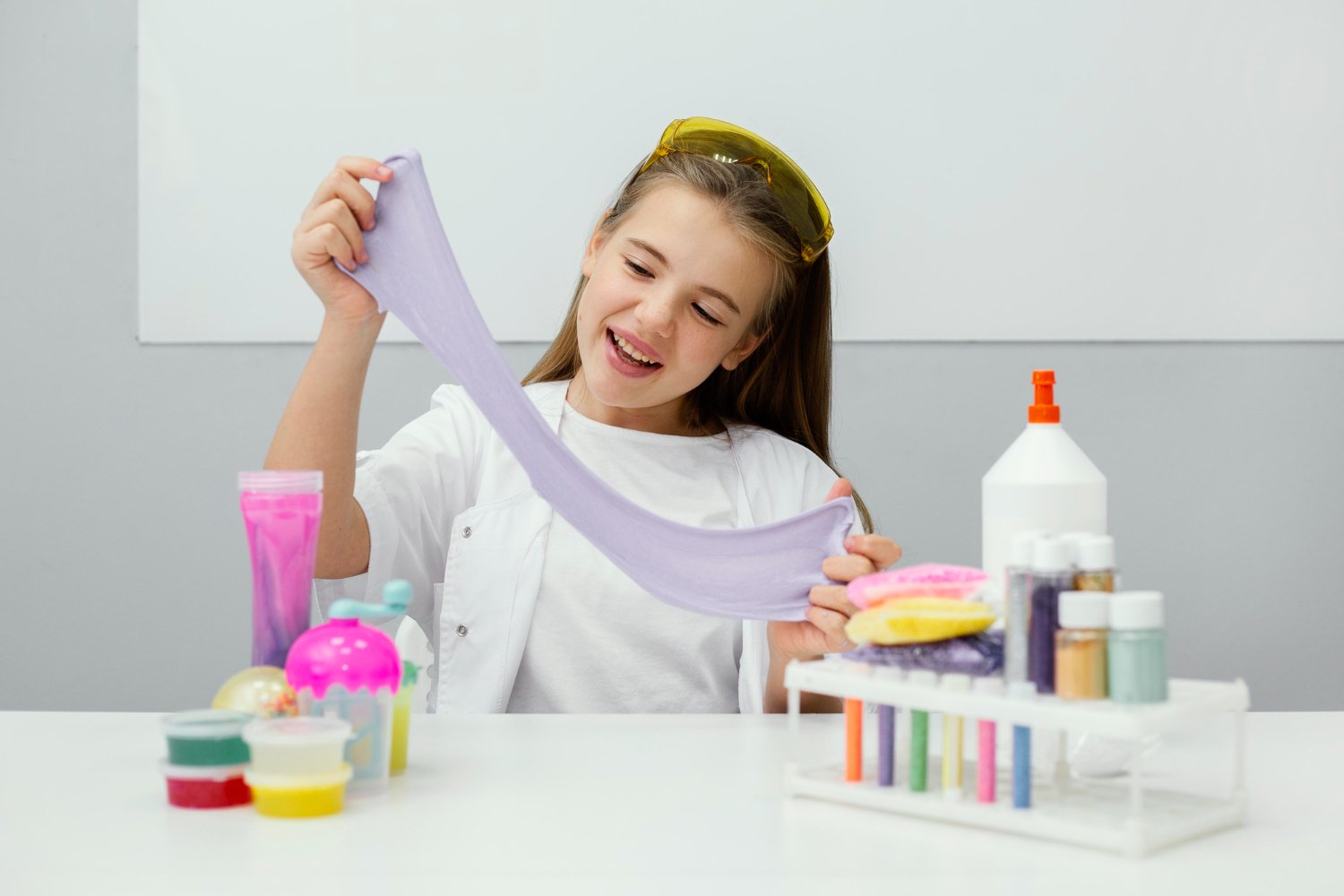How to get slime out of clothes: Kids enjoy slime because it’s a gooey, fun activity, but when it attaches to clothes, it can be a major hassle for parents. There are easy and efficient methods to get rid of slime stains on clothing without causing any harm to the fabric, so don’t worry. In addition to offering some practical advice on how to avoid slime catastrophes in the future, this post will demonstrate how to remove slime from clothing step-by-step using everyday home items. Let’s get started!
Understanding the Composition of Slime
Usually, glue, water, borax, and occasionally extra ingredients like food coloring, glitter, or shaving cream are combined to make slime. When it comes to cleaning slime, knowing its basic components is helpful. Slime can adhere obstinately to fabric fibers because of the adhesive component, which is typically polyvinyl acetate, or PVA.
Why Does Slime Stick to Clothes?
How to get slime out of clothes: Slime tends to attach to clothing because it is a thick, sticky material that can easily stretch and deform. Slime’s glue functions as an adhesive, binding to cloth fibers and making removal more difficult, particularly when pressure is applied. The good news is that you may dissolve the slime and get rid of it without leaving a lasting mark if you use the proper method.
Essential Tools and Materials for Removing Slime
Prior to beginning the slime removal process, collect the necessary supplies:
White vinegar
Dish soap in liquid form
Alcohol rubbing
Warm water
A sponge or gentle brush
Dish soap
A fresh cloth or paper towels
A dull knife or plastic spoon, ice cubes (optional), or a freezer
How to Get Slime Out of Clothes: Step-by-Step Methods
Let’s examine the most effective methods for removing slime off clothing now that you are aware of what you are dealing with. These techniques should help remove any stain, whether it’s dried-on or a new slime spatter.
Using White Vinegar
White vinegar is a go-to household product that works wonders on breaking down slime.
Step-by-Step Instructions:
Scrape off excess slime using a plastic spoon or dull knife.
Pour white vinegar directly onto the slime-covered area.
Gently scrub the fabric with a soft brush or sponge.
Rinse the fabric under warm water.
Repeat if necessary, then wash the clothing in the washing machine.
Liquid Dish Soap
Dish soap is another effective slime remover, especially for tougher stains.
Step-by-Step Instructions:
Apply liquid dish soap to the affected area.
Rub the fabric together gently to work in the soap.
Let the soap sit for 10-15 minutes to penetrate the slime.
Rinse with warm water.
Launder the item in the washing machine.
Rubbing Alcohol
Rubbing alcohol is ideal for breaking down sticky substances like slime.
Step-by-Step Instructions:
Dampen a cloth with rubbing alcohol.
Dab the slime area carefully.
Blot with a paper towel to lift the slime off.
Rinse under cold water and launder the item.
Laundry Detergent and Warm Water
This method is great for fresh slime that hasn’t had a chance to dry.
Step-by-Step Instructions:
Rinse the fabric under warm water to loosen the slime.
Apply a small amount of liquid laundry detergent directly onto the slime.
Work the detergent into the fabric with your fingers.
Rinse the fabric again under warm water.
If slime remains, repeat the process.
Freezing the Slime
If you’re dealing with dry slime, freezing it can help make removal easier.
Step-by-Step Instructions:
Place the slime-stained clothing in the freezer for about two hours.
Once the slime is frozen solid, use a plastic spoon or your fingers to crack and peel off the slime.
Follow up with a cleaning method like white vinegar or dish soap to remove any residue.
Removing Slime Residue and Stains
How to get slime out of clothes: Even after the slime is gone, a faint residue or stain may remain. To tackle this:
Use a stain remover spray or stick before washing.
Launder the clothing in warm water with a quality laundry detergent.
Check the area before drying—if the stain is still there, repeat the stain treatment.
Tips for Different Types of Fabrics
Depending on the fabric type, slime removal might take several forms. Here are some specific pointers:
Cotton Clothes
Because cotton is resilient, you can use more potent cleaning solutions, such as vinegar or rubbing alcohol, without worrying about causing damage to the fabric.
Delicate Fabrics
For delicate fabrics like silk or wool, avoid harsh scrubbing or strong chemicals. Instead, opt for gentler methods, such as cold water and a mild detergent.
Denim and Heavier Fabrics
Denim can handle more aggressive cleaning techniques. After removing slime, machine-wash the denim in hot water to get rid of any lingering residue.
Common Mistakes to Avoid When Removing Slime
How to get slime out of clothes: Avoid these typical errors when washing slime off clothing:
Using hot water right away: This can set the stain, making it harder to remove.
Rubbing the slime vigorously: It can push the slime deeper into the fabric fibers.
Putting clothes in the dryer before the slime is fully gone: The heat can make stains more difficult to remove.
Preventing Future Slime Mishaps
While slime is fun for kids, it’s best to establish boundaries to avoid future slime disasters:
Designate a slime play area.
Encourage kids to wear old clothes when playing with slime.
Place protective covers or mats over surfaces to prevent spills.
Alternative Slime Removers: Store-Bought Solutions
How to get slime out of clothes: If household remedies don’t work, try a store-bought solution specifically designed for tough stains, like Goo Gone or OxiClean. Always follow the instructions on the label and test on a small, inconspicuous area of the fabric first.
How to Keep Slime from Staining Clothes in the Future
Prevention is key. Use the following strategies to minimize slime accidents:
Avoid letting kids play with slime near expensive fabrics.
Keep slime-making ingredients in easy-to-clean areas.
Monitor slime playtime, especially when younger children are involved.
How to Get Slime Out of Carpets and Upholstery
Slime isn’t just a problem for clothes—it can also get stuck in carpets and upholstery. Use the same vinegar or dish soap methods, but be careful not to over-saturate the material. After cleaning, blot the area dry with a paper towel or cloth.
Conclusion
How to get slime out of clothes? Slime removal from clothing may appear difficult, but it’s actually rather simple if you follow the correct procedure. You can successfully get rid of slime and any remaining stains by utilizing common household products like dish soap, rubbing alcohol, or white vinegar. To stop additional damage, it’s important to move fast, steer clear of typical blunders, and handle the fabric with care. These detailed instructions will help you get your garments back to their former splendor, regardless of whether you’re dealing with fresh or dried slime. You won’t ever again have to worry about slime catastrophes destroying your favorite ensembles thanks to these suggestions!
Frequently Asked Questions
Q:1 Can you remove slime from clothes without vinegar?
A:1 Yes! You can use liquid dish soap, rubbing alcohol, or laundry detergent as effective alternatives to vinegar.
Q:2 Is it possible to remove dried slime from clothes?
A:2 Yes, freezing the slime or using rubbing alcohol can make dried slime easier to remove.
Q:3 Will the slime stain come out in the wash?
A:3 If you pre-treat the slime and wash the clothes properly, most stains should come out in the wash. However, avoid drying the fabric before checking if the stain is fully gone.
Q:4 How do I remove slime from delicate fabrics?
A:4 Use a mild detergent and cold water to avoid damaging the fabric. Avoid harsh scrubbing or strong chemicals.
See More



